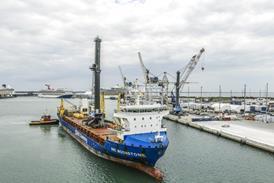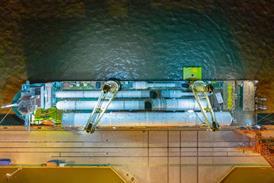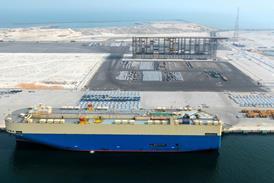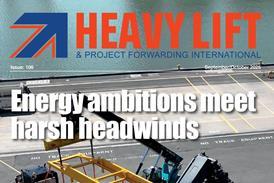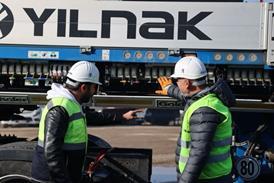Heavy lift and transport engineering specialist Mammoet has shown its mettle at the Greater Changhua 2b and 4a offshore wind farms in Taiwan, deploying its SK350 to minimise potential downtime at the projects.
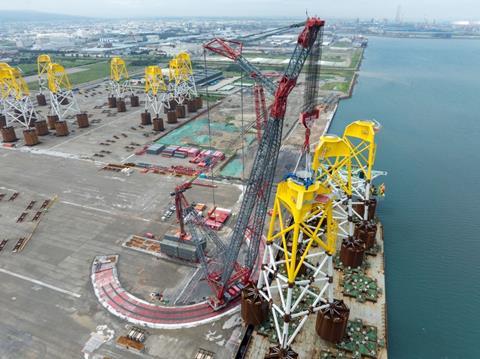
Mammoet-Giant was chosen by Ørsted Taiwan to marshal 66 wind turbine jackets for the 920 MW development – which is notable for using suction bucket jacket (SBJ) foundations and being a debut for this technology in the Asia-Pacific region on a large offshore wind farm.
Ro-ro is often the preferred method for moving large and heavy offshore wind foundations onto and from vessels at port. Under ideal conditions, driving foundations directly to a set down point – rather than lifting and then driving them – takes less time.
However, Mammoet said this approach is not always the most efficient or safest option under real-world conditions. In this instance, external factors mean a ring crane approach provides significant advantages. Mammoet-Giant’s engineers played a key role in coming up with a method to offload the jackets that ensured the changing tides had no impact on the timescale of the project.
“We considered both ro-ro and ring crane options but eventually came to them with a very clean solution of using our 5,000-tonne capacity SK350 ring crane,” explained Joey Yu, manager of operations at Mammoet Taiwan. “This was because the port is quite famous for big tides – sometimes up to 6 m in difference.”
The 80 m-tall, 2,400-tonne jackets arrived on a deck carrier in batches of four. They were hoisted from the deck using the SK350 and placed onto concrete supports on the quay.
Thanks to the SK350’s centralised ballast weight, the entire ring track did not need to be constructed on the quay – only the section needed to make the 130-degree slew from vessel to landing support – saving a lot of mobilisation time and working space.
Next, with the three legs of the jacket elevated on supports, 32 axle lines of SPMT drove underneath each foundation and lifted it in tandem, using their on-board stroke. 96 axle lines of SPMT were used in total across the project.
Next, the jackets were driven to a temporary storage area in the port and placed on steel foundations resting on load-bearing mats made from sustainable bamboo.
The steps were reversed for the final load-out phase – the jackets were driven back to the quayside and then lifted by the SK350 onto a deck carrier, which ferried them to the offshore installation vessel in batches of four. The efficiency of this approach helped to minimise the uptime of high-value assets at sea.
“Initially, Ørsted had some doubts as they had seen how capable and efficient our team is at doing ro-ro operations – but this is only possible in perfect tidal conditions,” said Yu. “Not every tide would be sufficient for a ro-ro operation, meaning days could have been lost with vessels waiting there for the right weather windows. With our method the vessels could be offloaded without any such constraints”.
HLPFI reported last month that Mammoet had engineered a gantry solution to extract HS2 tunnel boring machines (TBMs), in the UK.

